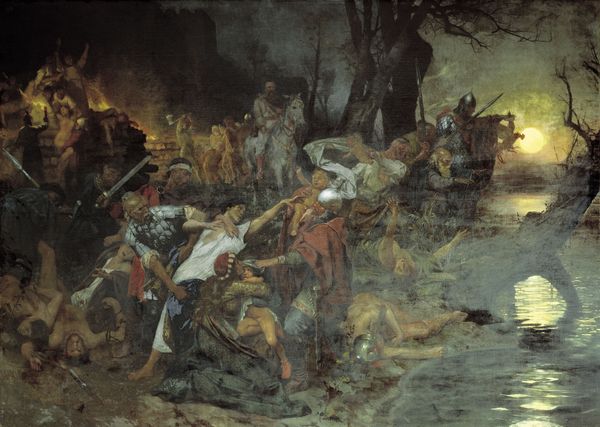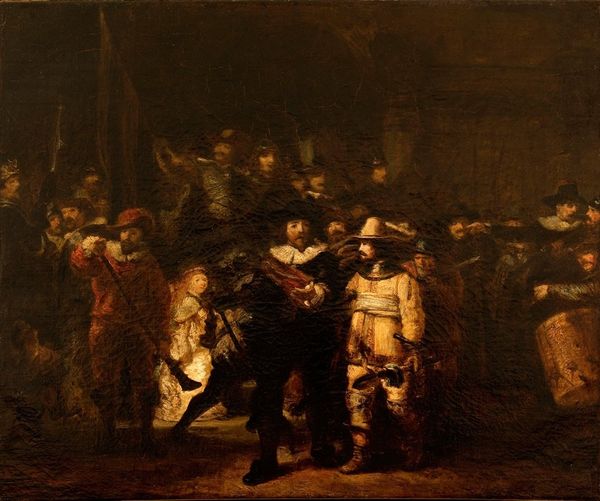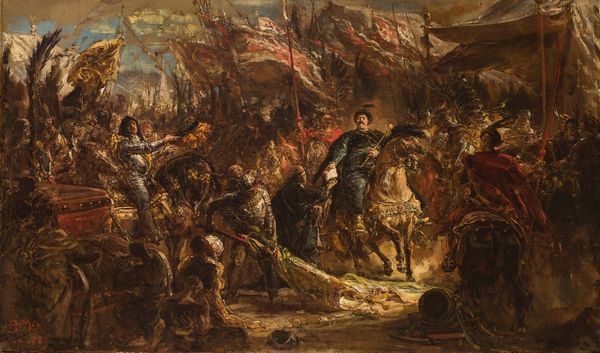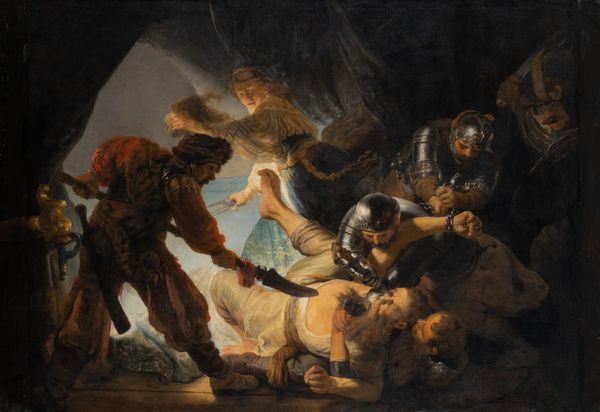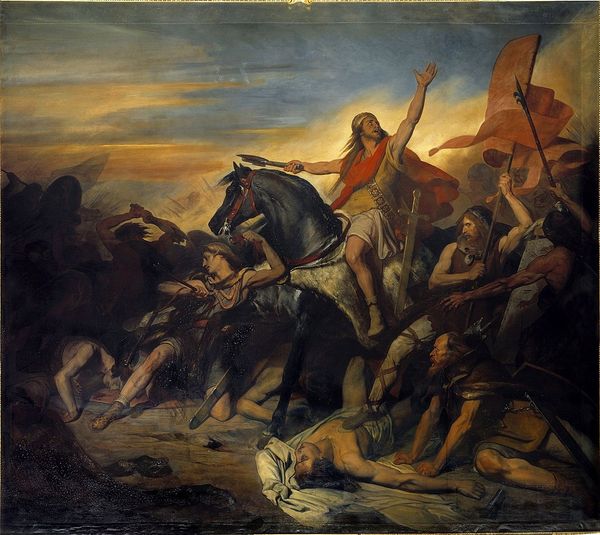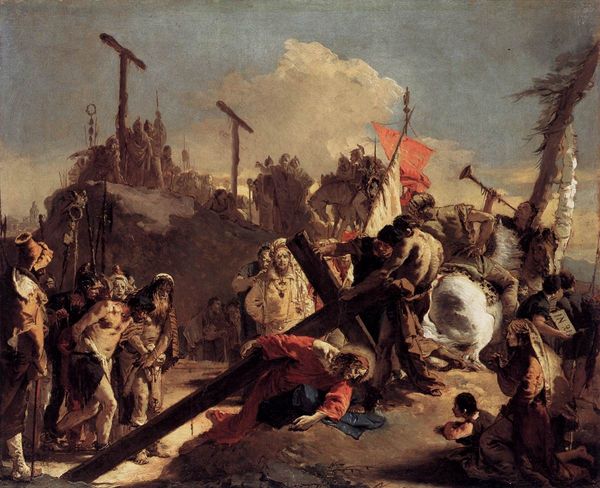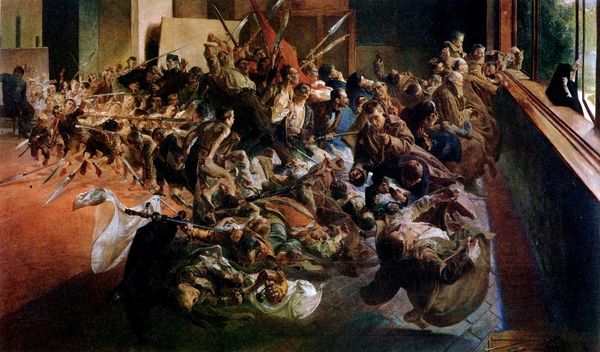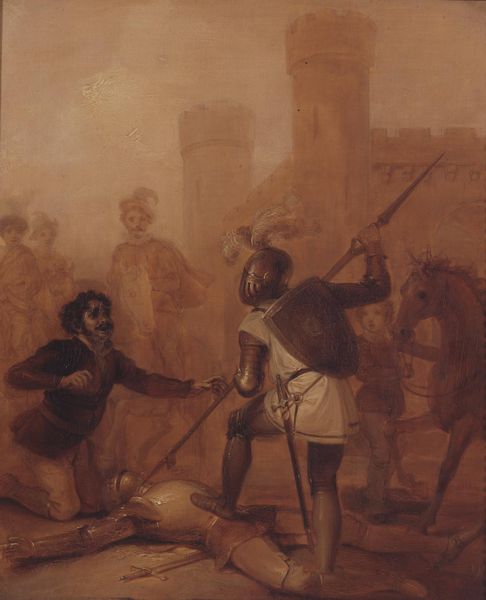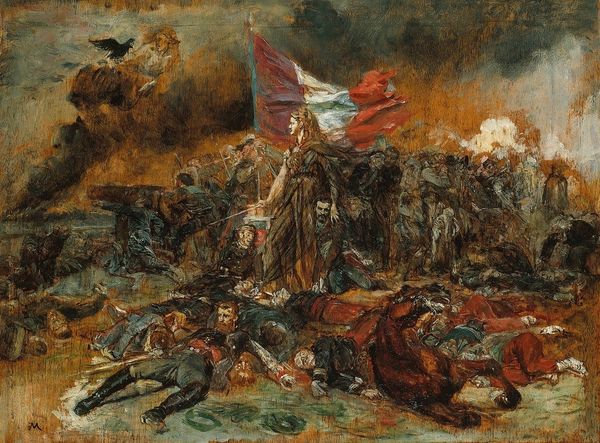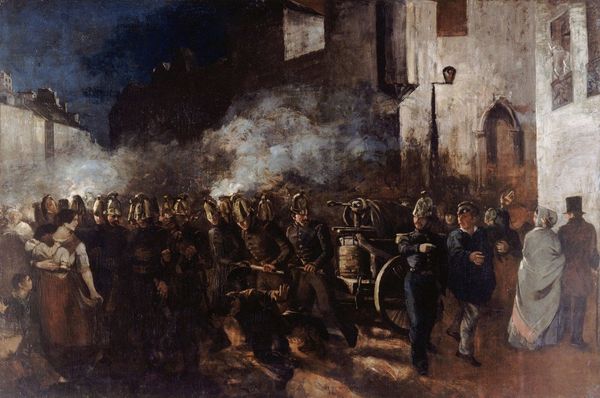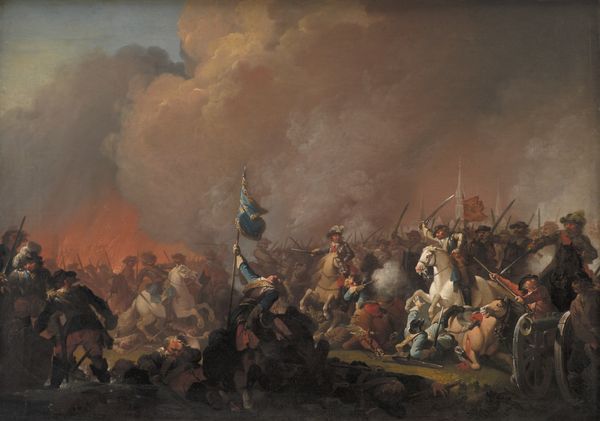
painting, oil-paint, charcoal
#
baroque
#
painting
#
oil-paint
#
charcoal drawing
#
oil painting
#
romanticism
#
charcoal
#
history-painting
#
charcoal
Copyright: Public domain
Curator: Goya, ever the master of emotional intensity, created this scene, entitled "Night Scene from the Inquisition." Look closely at how he's handled the oil paint here, a technique so visceral it practically pulls you into the thick of it. Editor: My immediate response is...oppressive. The darkness, the figures lurking at the edges—it feels like a nightmare you can't quite escape. All I can think about is Foucault. Curator: Exactly. Isn’t it curious? It feels less like bearing witness and more like an eerie invitation to be complicit in some twisted ritual. The limited palette almost feels like a deliberate muting, like silencing a scream. Editor: It’s not just the muted palette, but how he’s using the light. Harsh, theatrical. Almost as if we're seeing a meticulously staged spectacle of power, designed to intimidate and control through fear. There is also gender at stake here, I mean who is absent and why? Curator: A twisted cabaret indeed. But do you see that figure slumped in the foreground? The contrast of the pristine white against the grime... I find myself empathizing almost against my will. What does that tell us about Goya’s view, and ours? Editor: Absolutely. I can't help but read the scene through a lens of political resistance. Inquisitions weren’t just about religious dogma; they were tools of colonial power, of violently enforcing social and political hierarchies, often with devastating consequences for women, queer individuals and other minorities. The anxiety I get from viewing this scene echoes my own sense of current sociopolitical trends. Curator: Goya was dancing on a razor's edge with his art. "The sleep of reason produces monsters," as he so aptly put it elsewhere. How brave to hold up a mirror to the darkest chapters, to leave the questions unanswered for the rest of us to grapple with. Editor: It serves as a potent reminder that these dynamics of oppression, the use of fear and spectacle, haven't vanished into the past, even now they lurk behind contemporary systemic issues, challenging the dominant ideologies within our cultural landscape. Curator: Indeed. Ultimately, that’s why art like this persists: a discomforting nudge, ensuring we don't turn away from the shadows lurking at the margins. Editor: Right, these sorts of artworks have taught me to consider who has the authority to look and who becomes an object for viewers' observation. To ask myself what such imagery is normalizing, and who is most vulnerable when this happens.
Comments
No comments
Be the first to comment and join the conversation on the ultimate creative platform.
